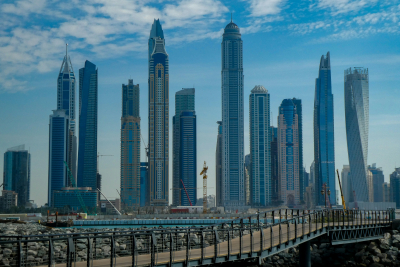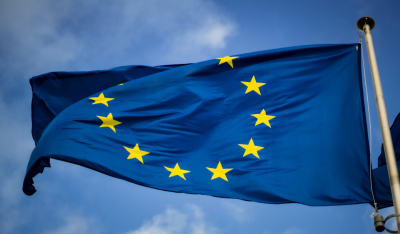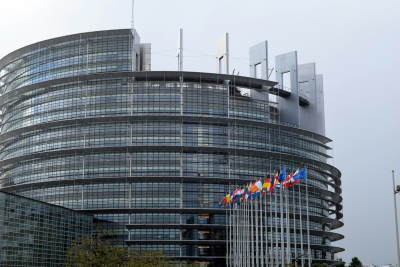This article is based on the transcript of Transparency International EU’s Director Carl Dolan’s speech at the Euronest Parliamentary Assembly Meeting in Brussels on 27 June 2018.
Thank you Chair, Honourable Members,
I would like to take the opportunity of having officials from the EU and from Eastern Partnership countries in the same room to highlight the close interdependence between these two regions when it comes to addressing money laundering and corruption challenges. A key pillar of the fight against corruption and money laundering is stronger cooperation and I am very pleased to be here and see that this is already happening.
In recent years, we have seen several scandals involving both Eastern Partnership countries and the EU. Looking at the way they operate, we can identify to main types of schemes:
- In the first scheme, the money is stolen in Eastern Partnership countries and laundered in the EU. This was the case for example of the Azerbaijani laundromat, the Yanukovych story or the Moldovan bank fraud where millions of euros were stolen in those countries, laundered through the EU financial system and hidden in shell companies, real estate or bank accounts located or registered in the EU.
- In the second case, we see Eastern Partnership countries functioning as a transit hub where stolen money from third countries is laundered in the region before being reintegrated into the EU financial system. Here, the Russian Laundromat serves as a typical example where the money entered the Laundromat via a set of anonymous shell companies in Russia. The stolen money was deposited in a Moldovan bank and transferred with the help of a Moldovan judge through a complex scheme involving the artificial creation of debt between the shell companies. In total about USD 8 billion was withdrawn directly from these accounts in Moldova and spent around the world, including in the EU.
I should highlight that all these scandals involve money stolen and laundered on a massive scale that can be measured in GDP percentage. For example, in the Moldovan bank fraud case, we are talking of about USD 1 billion stolen from the national banking system, which made about 12% of Moldovan GDP.
How to explain money laundering on such a massive scale? What are the risk factors on the side of Eastern Partnership countries? Let me highlight two of them:
- Limited checks and balances on executive power: in the region, we usually find strong connections between the political class and the business sector. For example, in Moldova, high-ranking officials have been trying to introduce some adjustments to the legal framework to “legalise the illegal”. Among other initiatives, we find the submission to the Parliament of a draft law releasing from criminal liability persons having committed economic crimes (e.g. illegal practice of entrepreneurial activity, tax evasion, manipulation and abuse with securities, violation of shareholders’ rights or unauthorised access to telecommunications networks).
Other government initiatives, such as the introduction of golden visas schemes (recently introduced in Moldova and soon-to-be-introduced in Armenia) may facilitate the inflow of money of dubious origin and contribute to positioning those countries as transit hubs for illicit money.
-
- A highly politicised and ineffective judiciary: some of the cases point at weaknesses and limited independence of the judiciary systems from the executive.
- Weak or inadequate AML systems, in particular weak implementation and insufficient sanctions: this has been highlighted in a number of Moneyval evaluation reports covering the region. Most recently, the 2017 Moneyval report on Ukraine reported the lack of sanctions and actual prosecution on money laundering and corruption charges.
Vulnerabilities are not only to be found in Eastern Partnership countries, but also in the EU.
Let’s focus on two key risk factors, which make the EU financial system particularly vulnerable to money laundering.
- The role of shell companies
In the Azerbaijani Laundromat case four UK based shell companies had bank accounts in Estonia.
2.5 billion EUR, 16,000 transactions could be secretly processed within the European Union without facing any major obstacle. This shows that organised crime or corrupt officials don’t need to go as far as Caribbean or Pacific islands to set up shell companies as these services are offered by the neighbouring European Union.
Let’s be optimistic though and hope for a better future with the recent introduction of public beneficial ownership registers in the EU. This shall greatly contribute to greater transparency over the identity of beneficial owners in Europe.
However, this may not suffice. A few unaddressed issues remain, such the ease and low cost with which you can set up a company in some EU countries. In the UK for example, as highlighted by TI UK recent report “Hiding in Plain Sight”, formation of UK companies is amongst the cheapest and fastest in the world, costing as little as £12 and taking a matter of minutes to complete the forms.
Even if the EU has stronger rules on paper, implementation is still lagging behind in particular with regard controls and checks made by responsible authorities (e.g. verification in BO registers, controls and checks on obliged entities) and the application of corresponding sanctions.
- The role of the banks and financial oversight
The scandals mentioned earlier have also highlighted how easy it is to process stolen money through European banks. Be it the Russian or the Azerbaijani laundromat, they both relied on European banks at some point to launder, transfer, or process stolen money. In the Russian Laundromat case, out of the 50 top banks involved in the case, 26 were European.
Anecdotal evidence points at insufficient financial oversight. The application of sanctions, both administrative for AML failing and criminal for complicit behaviours, is still rare. It’s true, proving the complicit behaviour of a bank is not an easy task. Things are moving though. In 2017 Dutch prosecutors probed ING Bank on money laundering and corruption charges related to Gulnara Karimova’s case.
More recently, we have also seen other types of sanctions and penalties emerging with the license withdrawal of two EU-based banks by the European Central Bank: the Latvian ABLV and the Estonian Versobank. This did not happen on AML grounds though, which are outside the ECB remits, although the money laundering activities those banks were involved in have clearly been a triggering factors of their financial and regulatory difficulties.
The ABLV case points not only at failings in sanctioning but also failings in detecting money laundering activities. Had it not been for the US bringing it to the attention of European and Latvian authorities, the case might have gone unnoticed. Similarly, recent concerns about the alleged illicit activities of the Maltese Pilatus bank came from US authorities.
Recommendations to address these issues are many-fold, but I would like to focus on what could be the role of the EU in preventing illicit financial flows from Eastern Partnership countries into the EU.
First, EU Member States should strengthen their AML safeguards by:
- sustaining their efforts towards greater beneficial ownership transparency through the establishment of interconnected public registers assorted with strong verification and control mechanisms;
- applying greater controls and sanctions on banks and other professional intermediaries in case of failure to carry out proper customer due diligence checks;
- applying not only administrative/civil sanctions on banks but also criminal penalties in case of complicit behaviour in money laundering;
- publishing detailed statistics and case descriptions about anti-money laundering enforcement efforts and publish these annually.
Second, the EU should work in close cooperation with Eastern Partnership countries to:
- more clearly articulate and prioritise the specific anti-corruption commitments to which partner countries are expected to subscribe through the Eastern Partnership and other regional agreements;
- provide ongoing support to public watchdogs, including supreme audit institutions and electoral management bodies, to ensure that they are able to act independently and impartially, without undue interference from the government which they are supposed to oversee;
- intensify efforts to promote institutional reforms in the region, such as guaranteeing the institutional independence of judiciaries, including the complete independence of judicial councils and judicial budgets from the executive and legislature;
- Provide support to the development of a vibrant civil society in the region.




